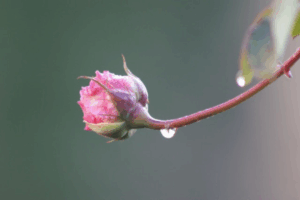What we are waiting for is not as important as what happens to us while we are waiting. —Zig Ziglar
In my last post, I shared three types of gratitude: predictable, growth, and what-if.
It was exciting to hear from several of you who really dug into gratitude recently and responded with questions about how gratitude actually creates and strengthens other virtues.
Let’s start here: Gratitude isn’t just a passive feeling.
It’s an active force that helps shape other virtues, like courage, self-control, and patience.
I’ve seen this play out in my own life, especially as I’ve worked on growing my coaching business and blog.
The dreams I’ve held dear have not always been easy to manifest, and there have been moments when I’ve questioned my ability to turn them into reality.
The what-if gratitude became a foundational piece for learning how to embrace the growth/pain that comes with nurturing my dreams, even when the results feel distant or unclear.
Just like a Japanese maple tree requires time, patience, and care to reach its full potential, so does the unfolding of our dreams and goals.
But more important than the result—whether dream or tree—is how I respond during the waiting, the setbacks, and the success…
And ultimately WHO I become.
What-if Gratitude Grows A Japanese Maple
For years, I’d dreamed of planting a Japanese maple in my garden.
There’s something special about these trees—their delicate leaves and vibrant colors make them stand out in any landscape.
However, in Colorado, the climate is harsh for such a plant, and I’ve had to think carefully about where to plant it.
Just like my dreams of expanding my coaching business, growing something as delicate as a Japanese maple requires patience, careful planning, and a deep trust that the tree (or my dream) will flourish in its own time.
That’s where what-if gratitude comes into play.
Instead of worrying about the challenges and risks, I started asking,
- “What if I’m able to cultivate this dream using gratitude for the process?”
- “What if I could trust that courage, self-control, and patience would grow naturally as I nurtured this idea?”
- “What if those virtues inspired and supported even bigger dreams?”
What-if Gratitude Can Grow Your Dream
Let’s try this process with a dream you’ve been holding back on.
Perhaps there’s a vision in your heart, a goal you’ve been hesitant to pursue, or a project you’ve been putting off.
By experimenting with what-if gratitude, you can shift your focus from doubt to trust, from fear to courage.
The following three steps will help guide you through this journey of gratitude and growth…
And because I believe no one needs to travel this path alone, I’ll share specific examples of my own struggles and successes with what-if gratitude.
NOTE: Read through the following steps once. On the second reading, write down your thoughts and what-if gratitude. This will slow your thinking and allow you to review your thoughts over the next few days.
STEP 1: Planting the Dream (Courage)
In order to start any meaningful project, you must plant the seed of your dream. Just as I had to decide where to plant the Japanese maple, you must choose where to plant your dream.
This is the step where courage comes in. You need the courage to acknowledge your dream and commit to it. No matter how uncertain or daunting the idea might feel, planting the seed is the first courageous step toward growth.
We can even find gratitude for the fear that shows up…it means you’re doing something that truly matters to you.
My practice:
I remember the day I started my coaching business. I was filled with doubts—would people be interested? Could I truly help others? But I planted the seed anyway. I took the leap. I started writing, posting on social media, and offering coaching sessions, even when I didn’t have all the answers. It wasn’t easy, but I was committed to helping the dream grow. I returned repeatedly to what-if gratitude, “What if what I offer impacts only one person?” It might only be me or a friend, but it will be worth it.
Your Practice:
Take a moment to plant your dream. Write it down or speak it out loud. Then, ask yourself: What if I believed in this dream enough to take the first step? What if I embraced gratitude for being given this idea? Whether that’s launching a project, sending an email, or talking to someone about it, do the thing that requires courage. That’s your first step toward planting your dream.
STEP 2: Watering the Dream (Self-Control)
Once you’ve planted your dream, it’s time to nourish it.
Just like a newly planted tree, your dream needs ongoing care.
The watering step represents self-control—the ability to stay consistent, take small actions, and stay focused on the long-term outcome.
In my case, watering my business meant staying consistent with creating content, connecting with my audience, and working on my communication skills, even when immediate results weren’t visible.
My practice:
There were many days when I didn’t see immediate success. Some blog posts didn’t get the attention I hoped for, and some coaching sessions felt awkward and unproductive. But I kept watering the dream. I kept showing up, making small improvements, and staying focused on the bigger picture. Self-control meant resisting the urge to give up and trusting that growth was happening, even if I couldn’t always see it.
Your Practice:
To water your dream, you need to cultivate self-control. This means committing to regular, small actions that move you forward. If your dream is to write a book, write a little each day. If it’s starting a business, take small steps each week—whether it’s researching, networking, or taking a course. Ask yourself: What if I stay consistent, even when results aren’t immediate? What if I express gratitude for this opportunity to take small, sustainable steps?
STEP 3: Pruning the Dream (Patience)
As your dream grows, there will be moments when you need to trim back, reflect, and allow room for new growth.
Pruning is an essential part of the process, and it represents patience.
It’s about recognizing that some things may need to be let go of to make room for the next phase of growth.
For my Japanese maple, this means allowing time for it to adapt to the environment before expecting it to thrive.
My Practice:
Sometimes I had to pause and reconsider my approach. Maybe a strategy wasn’t working, or a service offering needed refinement.
Pruning my business meant letting go of some ideas that weren’t serving me and focusing on what would truly help my clients.
It required patience—patience with the process and patience with myself.
What-if gratitude showed me how to create space so the truly important ideas could grow.
Your Practice:
Pruning is where patience really comes in.
Look at your dream and ask: What part of this process do I need to let go of in order to make room for new growth? Where can I find gratitude for the lessons learned both in the process and in myself?
Maybe it’s letting go of old habits, reevaluating your strategy, or taking a break to reflect.
Trust that time and patience will help your dream flourish.
Trusting the Process of Growth
Through the what-if gratitude process of planting, watering, and pruning, you’ll find that courage, self-control, and patience will naturally grow.
Just like the Japanese maple, your dream may take time to reach its full potential, but with what-if gratitude, you can embrace the journey.
It’s not about rushing the process; it’s about trusting that everything is unfolding in its own time.
I encourage you to actively experiment with what-if gratitude on your own dream.
Courageously plant the seed, water it with self-control, and prune it with patience. And as you do, you’ll see the beauty of your dreams unfold, just like a tree in bloom.
Dear friend, if this is something you’d like my support with, let’s connect and see if we’re a good fit.














